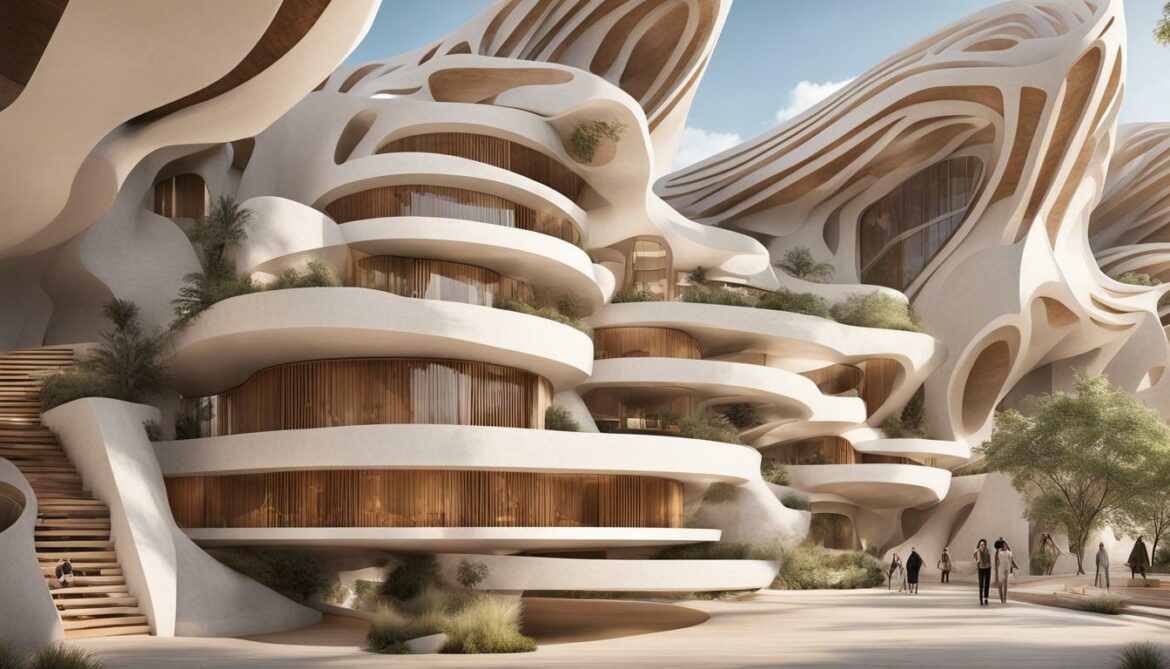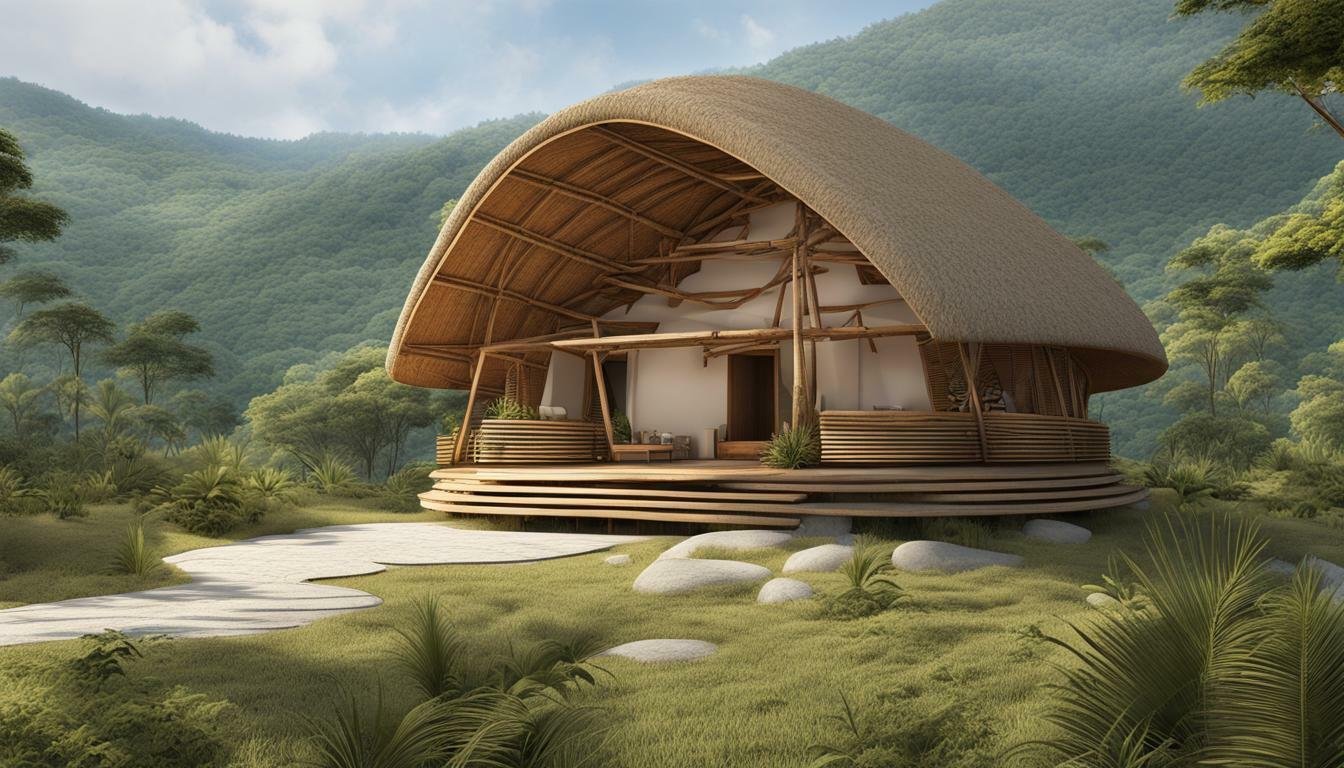Indigenous Futurism: Envisioning Tomorrow’s Architecture Through Cultural Heritage
Indigenous Futurism is a movement that incorporates Indigenous knowledge systems and cultural heritage to imagine alternative futures. Architecture is a crucial aspect of this movement, as it involves envisioning and designing physical spaces that reflect Indigenous values and beliefs. By drawing on traditional knowledge, Indigenous Futurist architects are creating innovative and sustainable designs that challenge dominant narratives and offer new possibilities for the future.
Key Takeaways:
- Indigenous Futurism incorporates Indigenous knowledge systems and cultural heritage to imagine alternative futures.
- Architecture plays a crucial role in this movement, reflecting Indigenous values and beliefs.
- Indigenous Futurist architects create innovative and sustainable designs that challenge dominant narratives.
- Alternative futures through Indigenous Futurism offer new possibilities for the future.
Understanding Indigenous Futurism
Indigenous Futurism is a growing movement that envisions alternative futures for Indigenous communities. It challenges dominant narratives and centers Indigenous knowledge systems in imagining decolonial futures. By doing so, it offers a counter-narrative to mainstream science fiction and futurism, which have often ignored or marginalized the perspectives of Indigenous peoples.
At its core, Indigenous Futurism is about imagining futures that are not just sustainable but also culturally grounded and spiritually affirming. As Indigenous scholar Grace Dillon explains, it is about “keeping the past, present, and future in mind, while seeing beyond them.”
Indigenous Futurism draws on Indigenous knowledge systems, which include a holistic understanding of the interconnections between humans, non-human beings, and the environment. It recognizes the importance of ancestral wisdom and traditional knowledge in shaping our understanding of the present and our visions of the future. Decolonial futures, as imagined through Indigenous Futurism, seek to disrupt colonial assumptions and power structures that continue to shape contemporary society.
In Indigenous Futurism, storytelling is a central means of transmitting knowledge and envisioning the future. Indigenous writers and artists use speculative fiction to explore the possibilities of what could be, drawing on traditional stories, cosmologies, and languages to create new narratives. By centering Indigenous perspectives, Indigenous Futurism offers a powerful tool for imagining alternative realities that are rooted in cultural heritage and decolonial thought.

Indigenous Futurist Art and Literature
Indigenous Futurism is a multidisciplinary movement that encompasses various art forms, including literature and visual art. Indigenous Futurist art and literature challenge traditional Western narratives and envision alternative futures that honor Indigenous culture and knowledge.
Indigenous Futurist art often incorporates traditional Indigenous designs and motifs, creating a fusion of ancient and contemporary themes. Examples of Indigenous Futurist artists include Kent Monkman, a Cree artist whose work challenges colonialism and its impact on Indigenous communities. Another noteworthy Indigenous Futurist artist is Marianne Nicolson, a member of the Musgamakw Dzawada’enuxw First Nation whose work explores the intersection of cultural heritage and contemporary art.
Indigenous Futurist literature similarly blends traditional Indigenous storytelling with contemporary themes and genres, such as science fiction and Afrofuturism. Notable Indigenous Futurist writers include Rebecca Roanhorse, whose work incorporates Navajo mythologies into her storytelling, and Cherie Dimaline, whose novel “The Marrow Thieves” imagines a future where Indigenous people are hunted for their bone marrow.
Indigenous Futurism intersects with Afrofuturism, a genre that explores the African diaspora’s culture and history within a science fiction context. Both genres share a critical lens towards dominant narratives, envisioning worlds where marginalized communities are at the forefront of progress and innovation.

Indigenous Storytelling and Technology
Indigenous storytelling has been a crucial element in shaping visions of the future within Indigenous Futurism. The use of technology is another essential aspect that Indigenous communities incorporate in their narratives. Indigenous technology refers to the tools, techniques, and practices developed by Indigenous peoples over thousands of years.
Through speculative fiction, Indigenous Futurists explore how technology can be used to preserve cultural heritage and empower Indigenous communities. In Indigenous Futurist literature, technology is often depicted as a tool for resistance against colonization and oppression.
Leanne Betasamosake Simpson, a Michi Saagiig Nishnaabeg writer, incorporates Indigenous technology in her work, such as the use of “seed songs” to grow plants in her science-fiction novel, “Noopiming.” Similarly, Mohawk filmmaker and artist Skawennati incorporates Indigenous technology in her digital art, such as using the virtual reality platform “Second Life” to create a virtual Indigenous community called “Aboriginal Territories in Cyberspace.”

“Indigenous people have been using technology for millennia…We need to assert our pre-colonial technologies and people’s knowledge of them as much as we need to develop new technologies.” – Jason Edward Lewis, Cherokee-Mohawk media artist
Speculative Fiction in Indigenous Futurism
Speculative fiction is a genre of literature that includes science fiction, fantasy, and horror, imagining alternative worlds and futuristic scenarios. In Indigenous Futurism, speculative fiction provides a platform for exploring cultural heritage, spirituality, and traditional knowledge in a contemporary context.
Author and scholar Grace Dillon coined the term “Indigenous Futurism” and identified the genre’s characteristics, such as decolonization, cultural survivance, and tribal sovereignty. In Indigenous Futurist literature, speculative fiction is used to challenge dominant narratives and offer alternative visions for the future.
Rebecca Roanhorse, a Black Indigenous writer, draws on traditional Navajo stories and beliefs in her novel “Trail of Lightning,” which imagines a post-apocalyptic world where Navajo gods and monsters come to life. Similarly, Cherie Dimaline, a Métis writer, uses traditional Anishinaabe knowledge in her novel “The Marrow Thieves,” which envisions a dystopian future where people can no longer dream.
Indigenous Knowledge Systems and Architecture
Architecture is not just about creating functional spaces; it is about shaping the built environment to reflect cultural identity and values. In Indigenous communities, architecture is deeply influenced by traditional knowledge systems that have been passed down through generations.
Indigenous knowledge systems encompass a range of practices, beliefs, and technologies that have been developed over thousands of years. They are rooted in a deep connection to the land and the natural world, and prioritize sustainability and resilience.
When it comes to architecture, Indigenous knowledge systems offer a unique perspective on the relationship between humans and the built environment. Indigenous architects draw on traditional knowledge to create designs that are both functional and culturally meaningful.
One example of Indigenous architectural practice is the use of natural materials and techniques that have been used for centuries. For instance, the igloo, a traditional Inuit dwelling, is constructed using blocks of snow, which provide insulation and protection from the elements. Similarly, the longhouse, a traditional dwelling of the Haudenosaunee people, is made of natural materials like bark and wood, and is designed to be easily expanded as the community grows.
Indigenous architecture also incorporates symbolic elements that reflect cultural heritage. For example, the totem pole, a traditional art form of Northwest Coast Indigenous peoples, is often featured in the design of contemporary Indigenous buildings as a way of honouring cultural legacy.
Overall, Indigenous knowledge systems play a critical role in shaping architecture that reflects cultural identity and values, while also prioritizing sustainability and resilience, ensuring that traditional knowledge is reflected in the built environment for future generations.

Indigenous Futurism and Sustainability
Indigenous Futurism offers a unique perspective on sustainability in architecture, drawing on traditional knowledge and eco-friendly technologies to create sustainable futures.
Indigenous communities have a deep understanding of the need for sustainable practices, having lived in harmony with the land for generations. This knowledge is reflected in their architectural designs, which incorporate natural materials and emphasize the interconnection between humans and the environment.
One example of sustainable Indigenous architectural design is the Earthship, a type of off-grid eco-home built from recycled materials such as tires, bottles, and cans. Earthships utilize solar and wind power, rainwater harvesting, and natural ventilation to minimize their impact on the environment.
| Indigenous Futurism and Sustainability in Architecture | Examples |
|---|---|
| Use of eco-friendly technologies | Earthships |
| Incorporation of traditional knowledge | Green roofs |
| Emphasis on interconnection with the environment | Passive solar design |
Another example is the use of green roofs, which involve growing vegetation on the roofs of buildings to provide insulation, absorb rainfall, and improve air quality. This practice has its roots in Indigenous knowledge systems, which recognize the benefits of integrating natural systems into built environments.
Passive solar design is another sustainable architectural practice that draws on Indigenous knowledge. This design approach maximizes the use of natural light and heat from the sun, reducing the need for artificial lighting and heating systems. By integrating traditional knowledge with modern technologies, Indigenous Futurism offers a promising vision for sustainable architecture.

“By incorporating eco-friendly technologies and traditional wisdom in Indigenous architectural designs, Indigenous Futurism emphasizes the importance of sustainable futures.”
Challenges and Opportunities in Indigenous Futurism
Despite the growing interest and recognition of Indigenous Futurism, Indigenous Futurists still face challenges in creating alternative futures. One significant challenge is the lack of representation and support in mainstream architecture and design industries, which often prioritize Western perspectives and aesthetics over Indigenous knowledge and traditions.
Furthermore, Indigenous Futurists must navigate the impact of colonialism and ongoing systemic oppression, which can hinder their ability to imagine and implement their visions of the future. This includes limited access to resources, language barriers, and a disconnect from cultural heritage.
However, there are also opportunities within the Indigenous Futurism movement. By centering Indigenous knowledge systems and perspectives, Indigenous Futurists have the potential to offer unique and transformative solutions to global issues such as climate change and social inequality. Collaboration between Indigenous communities and non-Indigenous allies also has the potential to create empowering and sustainable futures.
As Danièle Cybulskie, a Métis artist and writer, states, “The future is not a singular narrative, it is multiple possibilities.” Indigenous Futurism offers a platform for diverse narratives and perspectives, providing opportunities for community empowerment and cultural preservation.

Conclusion
Throughout this article, we have explored the concept of Indigenous Futurism and its relation to envisioning architecture of the future. We emphasized the importance of cultural heritage in shaping these visions and highlighted the role of Indigenous knowledge systems in creating alternative futures.
Indigenous Futurism challenges dominant narratives and offers a new way of thinking about the future. By incorporating traditional wisdom and eco-friendly technologies, Indigenous architects envision a sustainable future that prioritizes the well-being of both humans and the environment.
Despite facing challenges in creating alternative futures, Indigenous Futurism presents opportunities for collaboration and empowerment within the movement. By embracing diverse perspectives and honoring cultural heritage, we can create a more inclusive and sustainable future.
In conclusion, Indigenous Futurism offers a unique and inspiring vision for tomorrow’s architecture, one that highlights the importance of cultural heritage, sustainability, and inclusivity. Let us embrace this vision and work towards a better future for all. Indigenous Futurism is more than just a movement; it is a way of life that celebrates diversity and empowers communities to shape their own destiny.
FAQ
Q: What is Indigenous Futurism?
A: Indigenous Futurism is a concept that envisions the architecture of the future through the lens of cultural heritage. It challenges dominant narratives and offers alternative visions for the future by incorporating Indigenous knowledge systems and decolonial perspectives.
Q: How does Indigenous Futurism relate to architecture?
A: Indigenous Futurism emphasizes the importance of cultural heritage in shaping architectural designs and concepts. It explores how Indigenous knowledge systems influence architecture, incorporating traditional wisdom and sustainable practices.
Q: What role does art and literature play in Indigenous Futurism?
A: Art and literature are integral to Indigenous Futurism, showcasing the creativity and contributions of Indigenous artists and writers. Indigenous Futurist art and literature often intersects with Afrofuturism, exploring themes of culture, identity, and future possibilities.
Q: How does Indigenous storytelling contribute to visions of the future?
A: Indigenous storytelling plays a vital role in shaping visions of the future within Indigenous Futurism. It preserves cultural knowledge, challenges dominant narratives, and incorporates technology and speculative fiction to imagine alternative futures.
Q: How does Indigenous knowledge systems influence architectural designs?
A: Indigenous knowledge systems inform architectural designs by incorporating traditional wisdom, cultural practices, and sustainable principles. Indigenous architectural practices often prioritize harmony with nature and community well-being.
Q: How does Indigenous Futurism align with sustainability?
A: Indigenous Futurism aligns with sustainability by incorporating eco-friendly technologies and traditional wisdom into architectural designs. It promotes sustainable futures that prioritize the well-being of both people and the environment.
Q: What challenges and opportunities exist within Indigenous Futurism?
A: Indigenous Futurism faces challenges in countering dominant narratives and creating alternative futures. However, there are opportunities for collaboration and empowerment within the movement, fostering diverse perspectives and cultural preservation.







